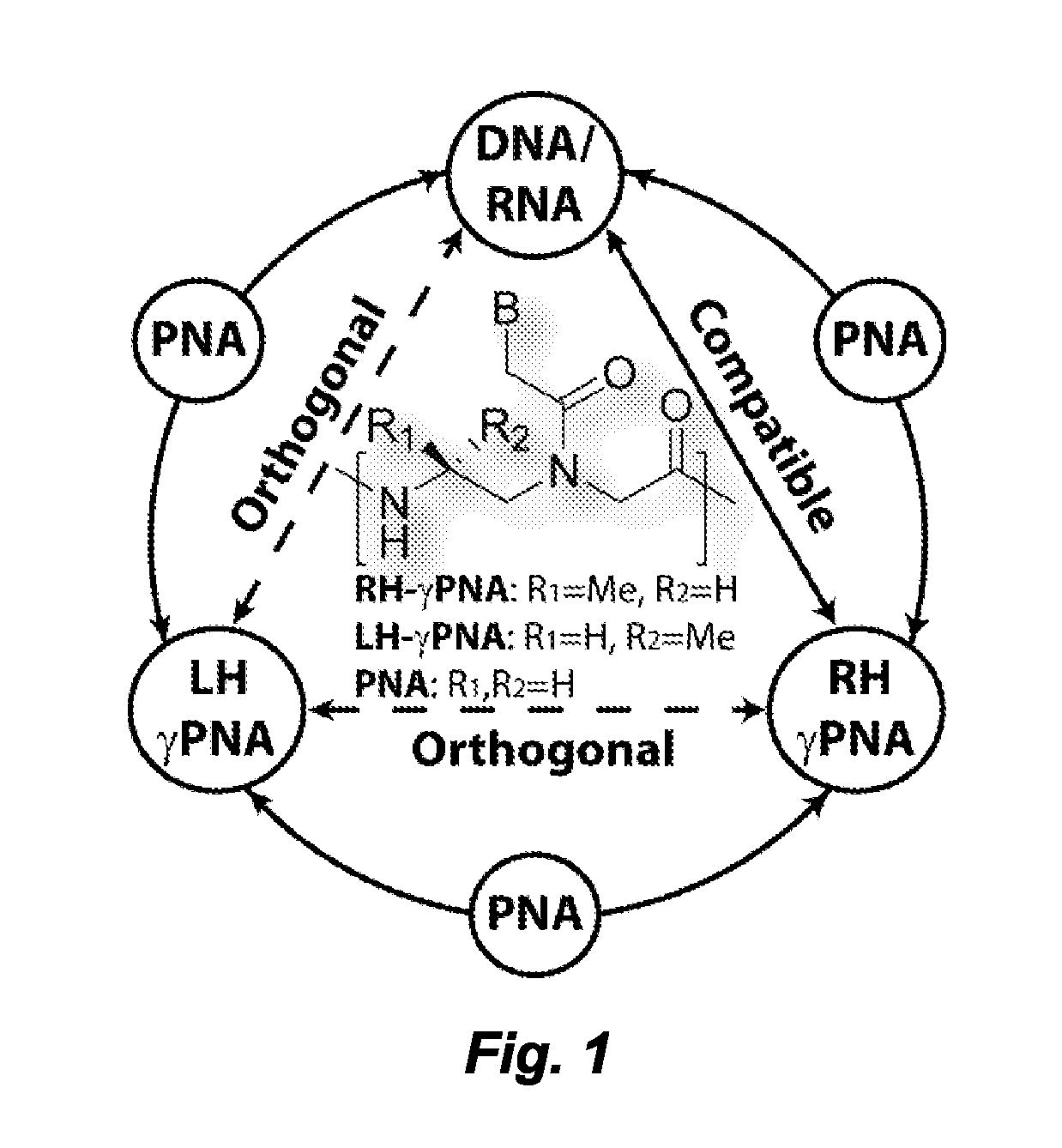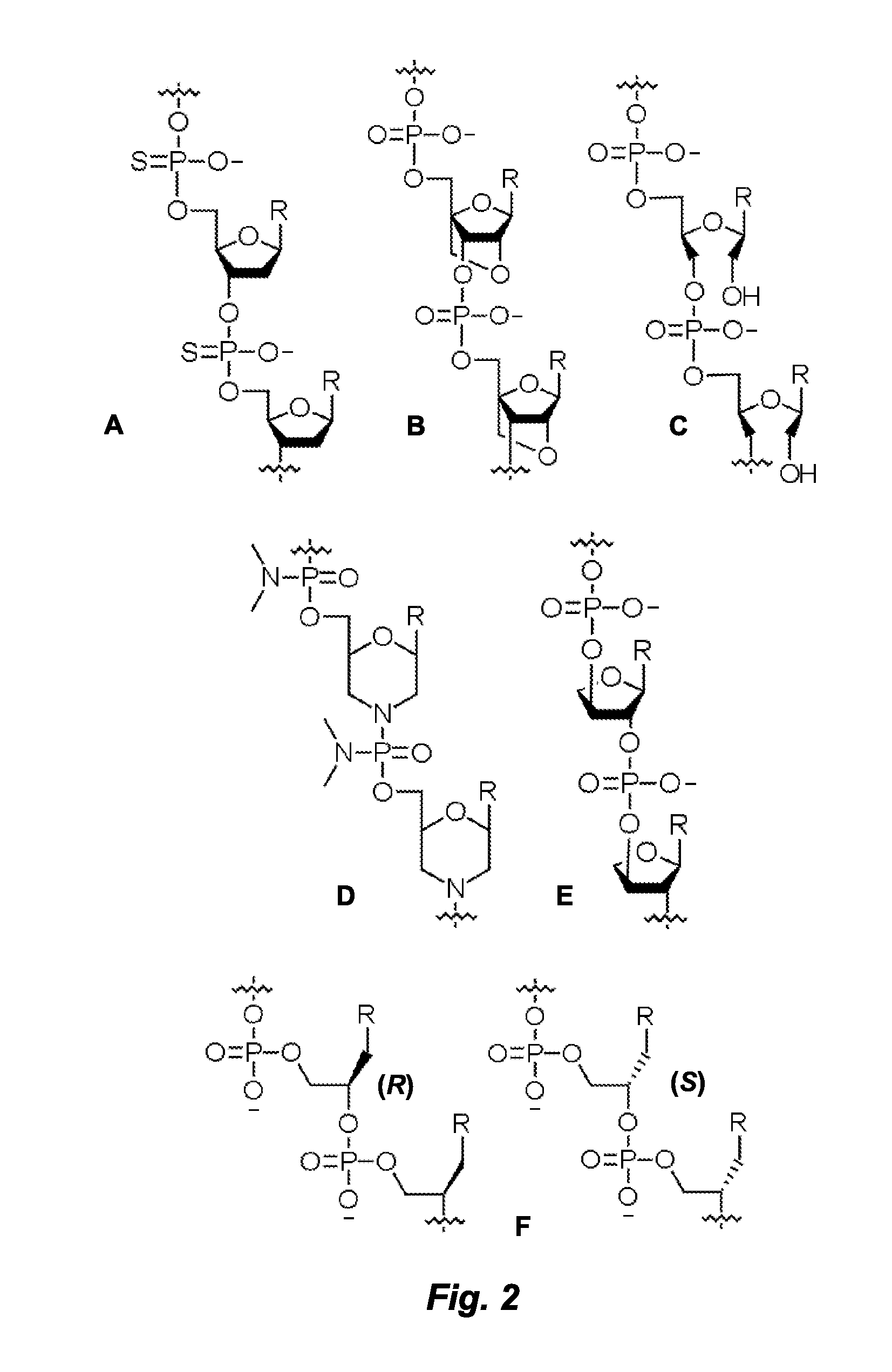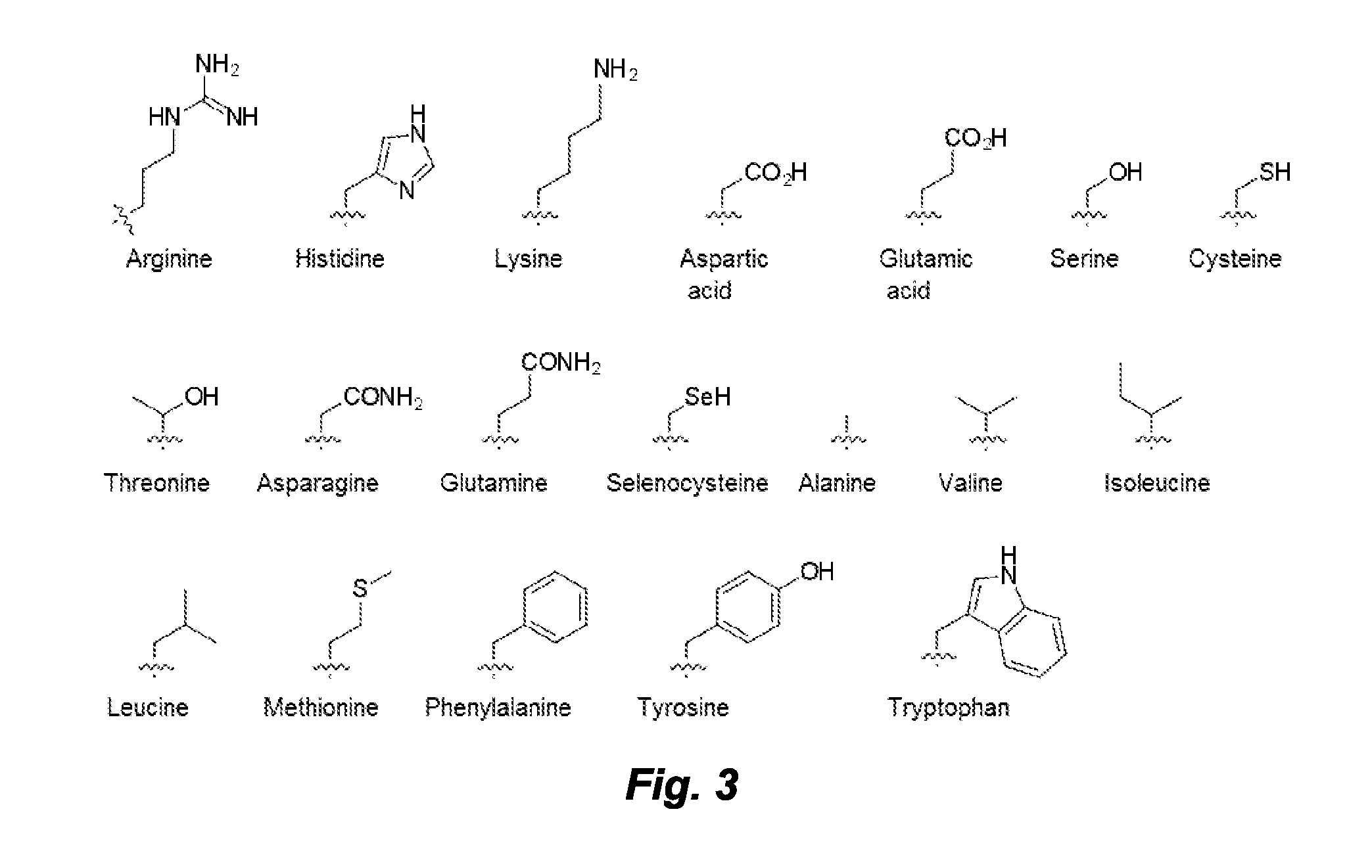Left-Handed Gamma-Peptide Nucleic Acids, Methods of Synthesis and Uses Therefor
a technology of gamma-peptides and nucleic acids, which is applied in the field of left-handed gamma-peptide nucleic acids, methods of synthesis and uses therefor, can solve the problems of rare in vivo exploitation, and achieve the effect of reducing the carboxylic acid group
- Summary
- Abstract
- Description
- Claims
- Application Information
AI Technical Summary
Benefits of technology
Problems solved by technology
Method used
Image
Examples
example 1
Synthesis of LγPNA Monomers from D-Amino Acids
[0110]LγPNA are synthesized from D-amino acids via reductive amination synthesis or a Mitsunobu reaction, according to the reagents and conditions detailed in Scheme 1, FIG. 4.
[0111]Reagents and conditions: (a) NMM (N-methylmorpholine), IBC (isobutyl chloroformate), DME 4° C., the NaBH4; (b) Swern oxidation; (c) methyl glycine ester, NMM 4° C., then AcOH (acetic acid), NaBH3CN; (d) Mitsonobu reaction; (e) CsCO3, thiophenol, THF (tetrahydrofuran), room temperature; (f) HBTU (2-(1H-benzotriazol-1-yl)-1,1,3,3-tetramethyluronium hexafluorophosphate), nucleobase, DMF (dimethylformamide), room temperature; (g) 2N NaOH / THF. The nucleobase of step (f) can be any nucleobase, including natural or unnatural nucleobases described herein or elsewhere, for example and without limitation, the divalent nucleobases of WO 2014 / 169206.
example 2
Synthesis of (A) RγPNA and (B) LγPNA Monomers from L-Serine
[0112]Both LγPNA and RγPNA monomers are synthesized from L-serine. The reagents and conditions for this synthesis of RγPNA and LγPNA are detailed below in Scheme 2 (FIGS. 5), (A) and (B), respectively. Although synthesis is described in the context of natural nucleobases A, G, C and T, the method is equally applicable to other nucleobases, for example the natural or unnatural nucleobases described herein or elsewhere, for example and without limitation, the divalent nucleobases of WO 2014 / 169206. The major advantages of this synthetic scheme are optical purity, scalability, cost-saving, and ease of functional group modifications at the γ-backbone. The synthesis described herein is typically performed on a 100 g-scale. The first step involves dibenzylation of the amino group of L-serine, a commercially available and relatively cheap starting material. Selective protection of the serine sidechain with tetrahydropyran (THP) by ...
example 3
[0113]Herein we report the development of a tight-binding, orthogonal, synthetically versatile and information-interfaced nucleic acid platform, called gamma-peptide nucleic acid (γPNA), for programming molecular interactions. The system comprises three molecular entities: the right-handed (RH) and left-handed (LH) helical conformers and a non-helical (NH) domain, with the first two incapable of recognizing each other, and the third capable of recognizing the RH and LH conformers, as well as the natural nucleic acid biopolymers (i.e. DNA and RNA)—enabling the storage and translation of genetic information from one system to the next. All three domains are prepared from the same chemical building blocks, with the exception of the stereochemistry or lack thereof at the γ-backbone that determines if the corresponding oligo adopts an RH, LH or NH motif (FIG. 6). The work has direct implications for in vitro as well as in vivo molecular self-assembly and computing.
Experimental Procedures...
PUM
| Property | Measurement | Unit |
|---|---|---|
| Length | aaaaa | aaaaa |
| Fluorescence | aaaaa | aaaaa |
Abstract
Description
Claims
Application Information
 Login to View More
Login to View More - R&D
- Intellectual Property
- Life Sciences
- Materials
- Tech Scout
- Unparalleled Data Quality
- Higher Quality Content
- 60% Fewer Hallucinations
Browse by: Latest US Patents, China's latest patents, Technical Efficacy Thesaurus, Application Domain, Technology Topic, Popular Technical Reports.
© 2025 PatSnap. All rights reserved.Legal|Privacy policy|Modern Slavery Act Transparency Statement|Sitemap|About US| Contact US: help@patsnap.com



